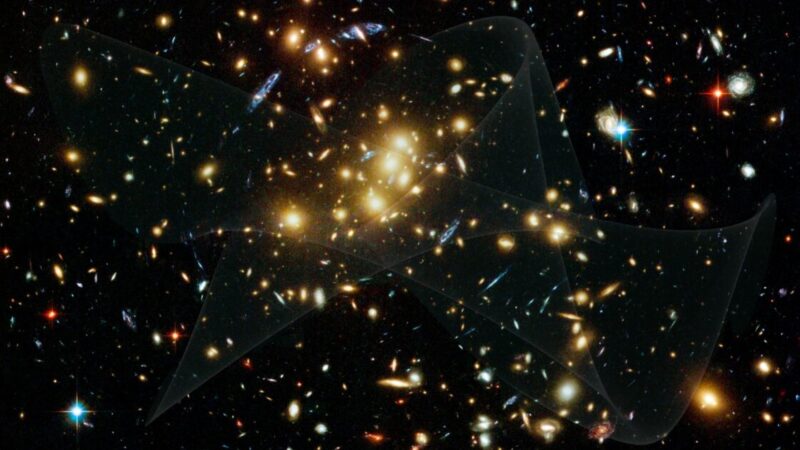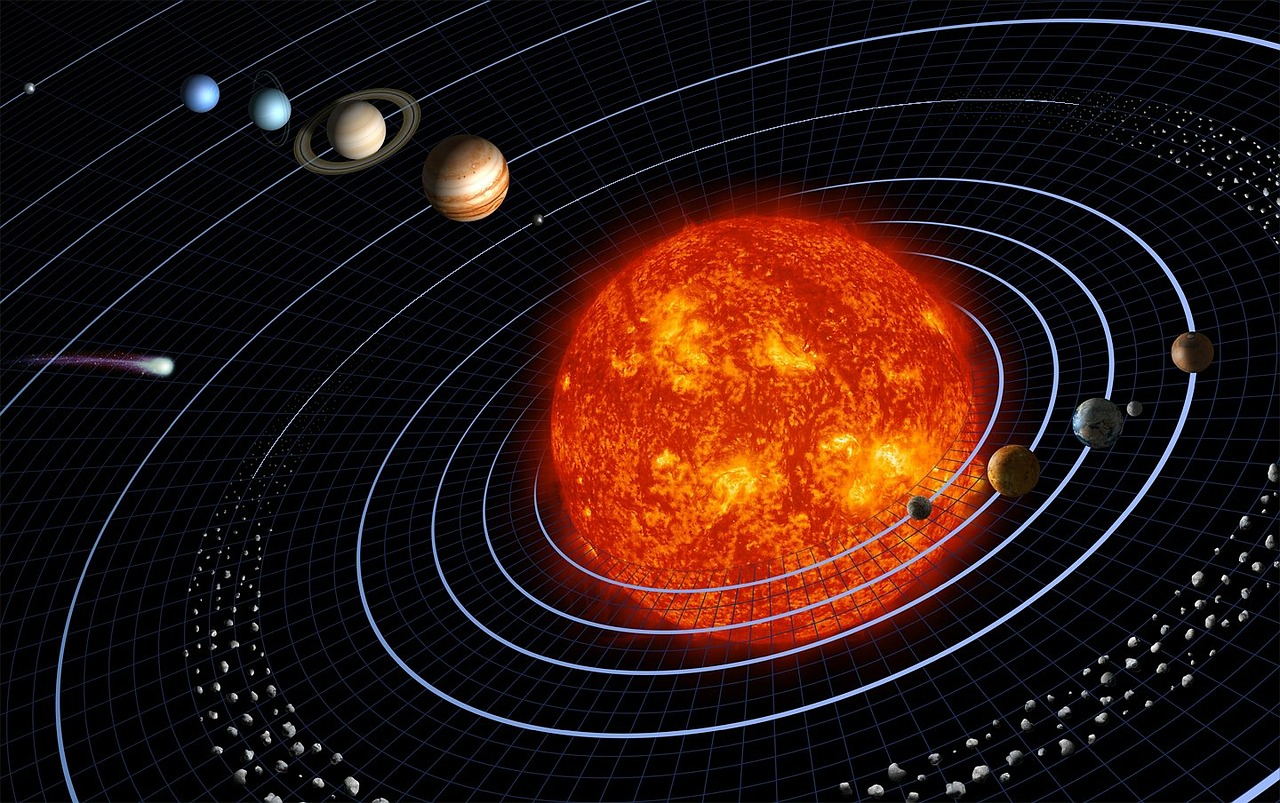Next Dimension Lies Within Dark Matter, Energy’s Secret

Intelligent minds have always imagined the universe to be three-dimensional space with half-dimensional time. The dimensions of space and time may include the next dimension connected with many other universes via a mysterious force known as dark matter and energy.
We can’t observe the fourth dimension because it is not in our space, but it exists all around us. We can sense dark matter and energy, for example, only when they interact with visible and dark matter and energy, but we cannot detect their particles. Similarly, there is another dimension that is imperceptible to our senses. According to supersymmetry theories, there are no particles in the universe that have never been observed.
According to supersymmetry, every particle in the Standard Model has a companion whose spin is offset by half a unit. Therefore, fermions accompany bosons and vice versa.
But scientists have found no evidence of a supersymmetric particle yet despite extensive searching and tons of accumulated data from multiple collisions. In actuality, relatively few theoretical models still hold water, and several supersymmetry models have been fully ruled out.
However, we shouldn’t forget that there are some particles, such as those of dark matter and energy, that we have not yet been able to detect.
Indeed, detecting gravitational lensing is not to detect dark matter or energy particles, because “particles” here refers only to the physical property. Lensing shows the bending of light, enabling us to speculate that there’s “something”. But the “something,” or the physical property of the dark matter, is yet to be discovered. The discovery of the physical properties of dark matter and energy in the form of particles could be the first step toward unraveling the mystery of the next dimension.
Dark Matter And Energy
As for dark matter, we have not been able to fully confirm yet whether it really exists or not. But if dark matter and energy exist, they need to have physical properties of the next level or another dimension out there.
And it exists. The new research assumes that 66.2 percent of the universe is dark energy and that the remaining 33.8 percent is made up of both dark matter and matter.
This typically shows that the existence of dark matter is almost certain.
Moreover, calculations demonstrating that many galaxies would behave quite differently if they did not include a significant amount of unseen substance are the main source of evidence for dark matter. In the absence of dark matter, galaxies would not have formed in many cases, and some would not have moved in the manner that they do now.
Even if it is impossible to detect with existing technology, astronomers are now able to determine the influence of dark matter by analyzing how the gravity of giant galaxy clusters bends and distorts the light of more distant galaxies lying behind the cluster.
Likewise, distance measurements for galaxies at high redshift using type Ia supernovae (SN Ia) provide the most direct and compelling evidence for the expanding cosmos powered by dark energy.
The most recent James Webb Space Telescope’s images have provided us with additional evidence of dark matter’s existence by capturing a mind-blowing view of bent lights due to gravitational lensing. But the question about dark matter and energy particles has still remained unanswered, and therein lies the secret of the existence of the next dimension.
Dimensions
Barring the space-twisted invisible universe, there are two ways to describe dimensions. The first way is to consider a person’s world as composed of two or three spatial dimensions (length, width, and height) plus one temporal dimension (time). In three-dimensional space, there are two spatial dimensions, two temporal dimensions, and one dimension in between. For example, a person’s world might be described as being 3-D (three spatial dimensions plus one temporal dimension) or 7-D (seven spatial dimensions plus one temporal dimension).
The second way is to consider the person as moving through a moving bubble of air or water. The two-dimensional surface of the bubble is the world for that person alone. Outside of the bubble is a four-dimensional space: space, time, and size. When we move into that four-dimensional space, we are not in three spatial dimensions plus one time dimension any more. We are just in between those two worlds, surrounded by other bubbles, each with their own four-dimensional world inside them, and us inside our own bubble of air or water.
Next Dimension
Unlike what is speculated by quantum and string theories, the next dimension hidden within the secrets of dark matter and energy could be like a mirror world connected to our 3D world or like a thick fog of the next dimension. Or it could be like an interdimensional place that is neither here nor there or in between realms. In this sense, time and space run together at some places but part from each other at others. A new dimension in this sense can be spaceless; for example, the time axis is parallel with the space axis and no one knows how gravity works in this space.
The most remarkable property of the next dimension could be better described as an invisible, for humans, universe that is connected to our visible universe via mysterious dark matter and energy. Dark matter and energy must have strong electrical charges. The presence of strong electric charges means the existence of strong magnetic fields, which can block the space and twist it. In other words, “the next dimension” could be a space-twisted invisible world.
In this sense, the quantum field theories are a conceptual structure that attempts to explain the physical process in terms of a wave function rather than an actual physical object; they are only an approximation to describe the real world (our 3D world). But existence in this dimension is really real because our senses can sense it. In other words, the next dimension is something that we have never observed before but that can come into sensual touch if we can initially detect the physical properties of dark matter and energy.
Lower Structure Than That of Quantum
But in order to describe the physical properties of dark matter and energy would require an even more complex structure than that of quantum field theories. Quantum mechanics, which studies the behavior of matter and light at the atomic and subatomic levels, makes an attempt to describe and account for the properties of molecules and atoms, as well as their constituents – electrons, protons, neutrons, and other more esoteric particles like quarks and gluons. These properties include particle interactions with one another as well as interactions with electromagnetic radiation (i.e., light, X-rays, and gamma rays).
The quantum’s energy E is related to its frequency v by the equation E = h. Planck’s constant, or the quantity h, is a universal constant with an approximate value of 6.62607 1034 joule second. Planck demonstrated that the calculated energy spectrum agreed with the observed spectrum over the entire wavelength range.
As previously stated, the primary goal of quantum theory is to study matter at the particle level. Therefore, we should at least include additional parameters such as mass and spin to study it at its lower level, the level of dark matter. And the only way to make this guess is to assume a wave function, as peculiar as it may seem, is applicable to the next dimension hidden in the invisible universe.
Though the wave function of dark matter and energy cannot be measured because its interaction with other physical particles is not yet identified, it can be described in a mathematical formula by assuming a medium that straddles the visible universe and the invisible universe. This medium could be one of these four possibilities: three-dimensional space (the 3D spacetwist), time (the time dimension within the next dimension), or a two-dimensional plane (the 2D mirror world), which connects our universe to another universe’s.
Dark Matter And Energy Particles Must Exist
Yes! Dark matter and energy particles must exist. There is an invisible universe beyond our senses. And dark matter and energy exist in the invisible universe – in the next dimension.
Not long ago, we considered an atom to be the smallest form of matter. Now, we have discovered quantum quarks, gluons, particles, and strings. Scientists can currently measure the smallest physical size with a particle accelerator that is 2,000 times smaller than a proton, or 5 x 10^-20 m.
It’s very possible that scientists will detect dark matter and energy particles sooner rather than later, as the velocity of scientific development has been accelerating unprecedentedly. The only problem could still be that, even in the quantum world, we cannot experience it in our human form.
Anyway, let’s look for ways to comprehend dark matter and energy if we truly want to feel the secret of the next dimension.
Auto Amazon Links: No products found.


